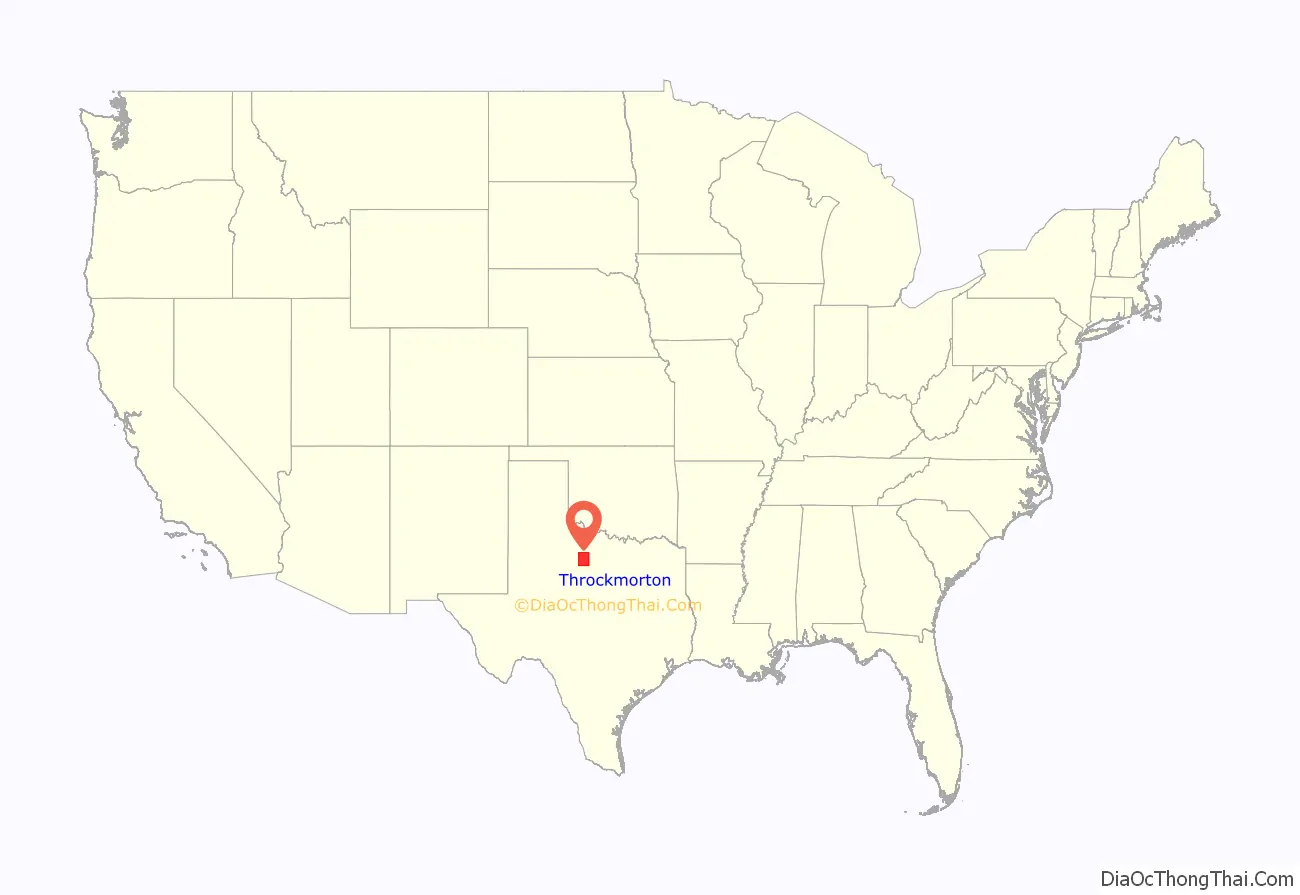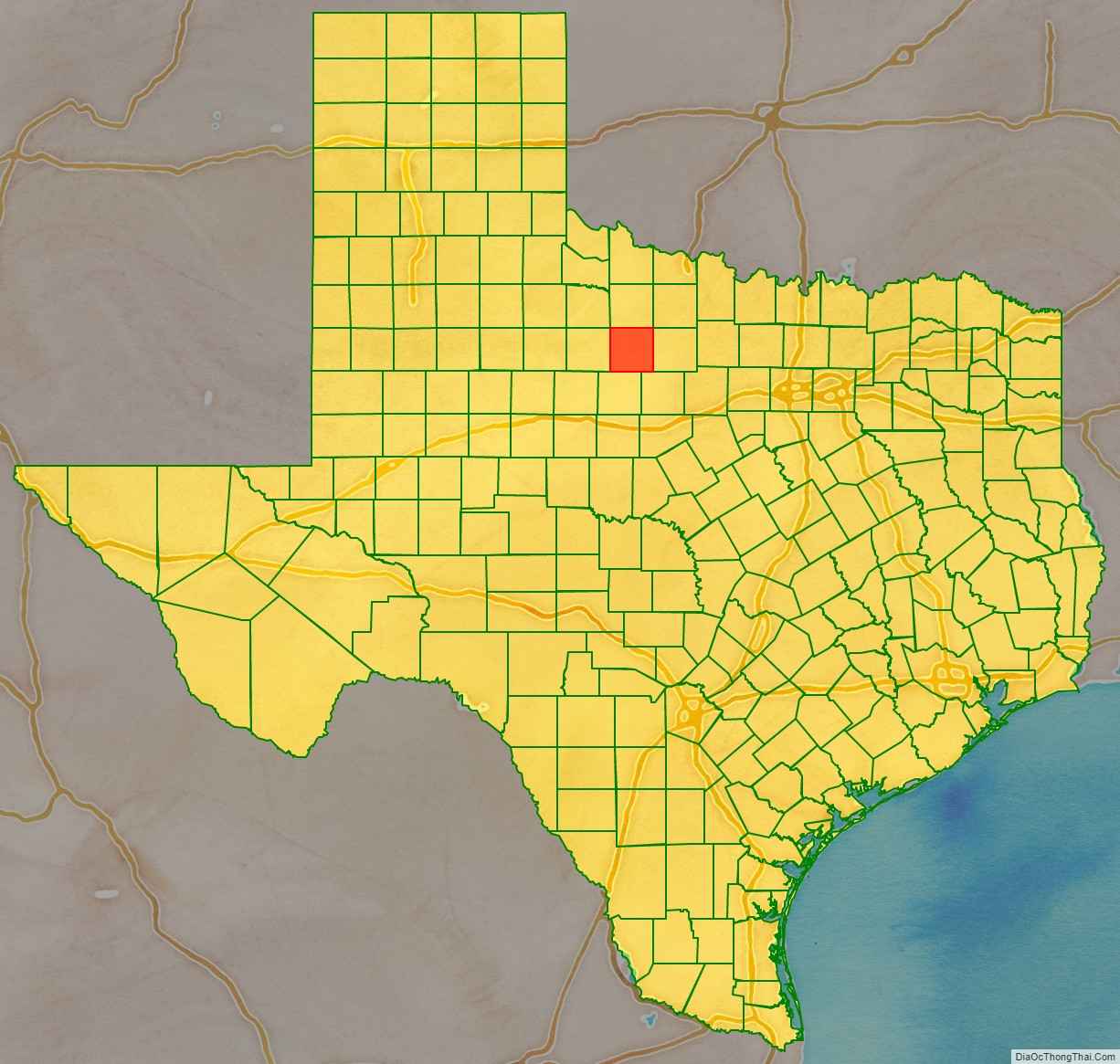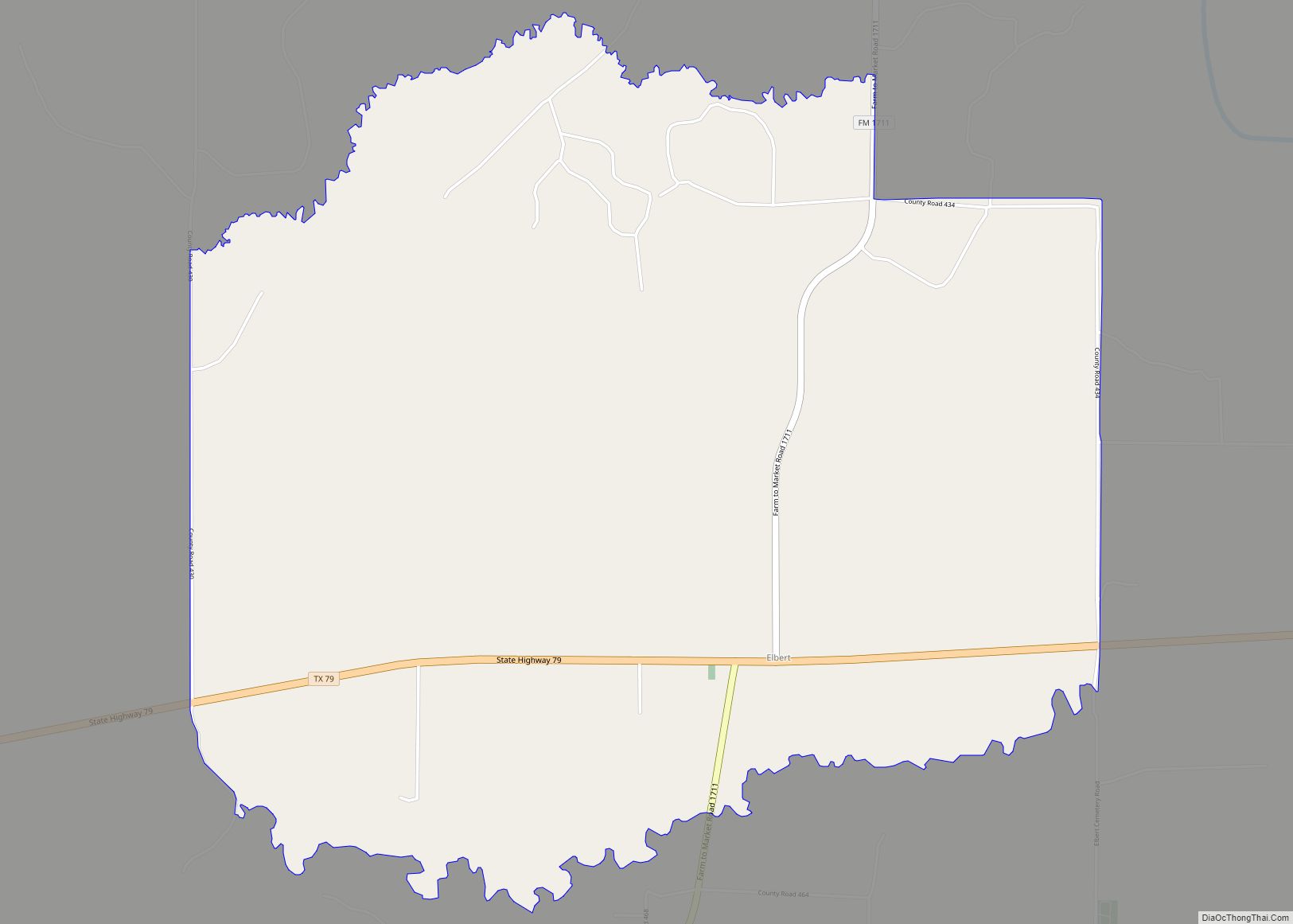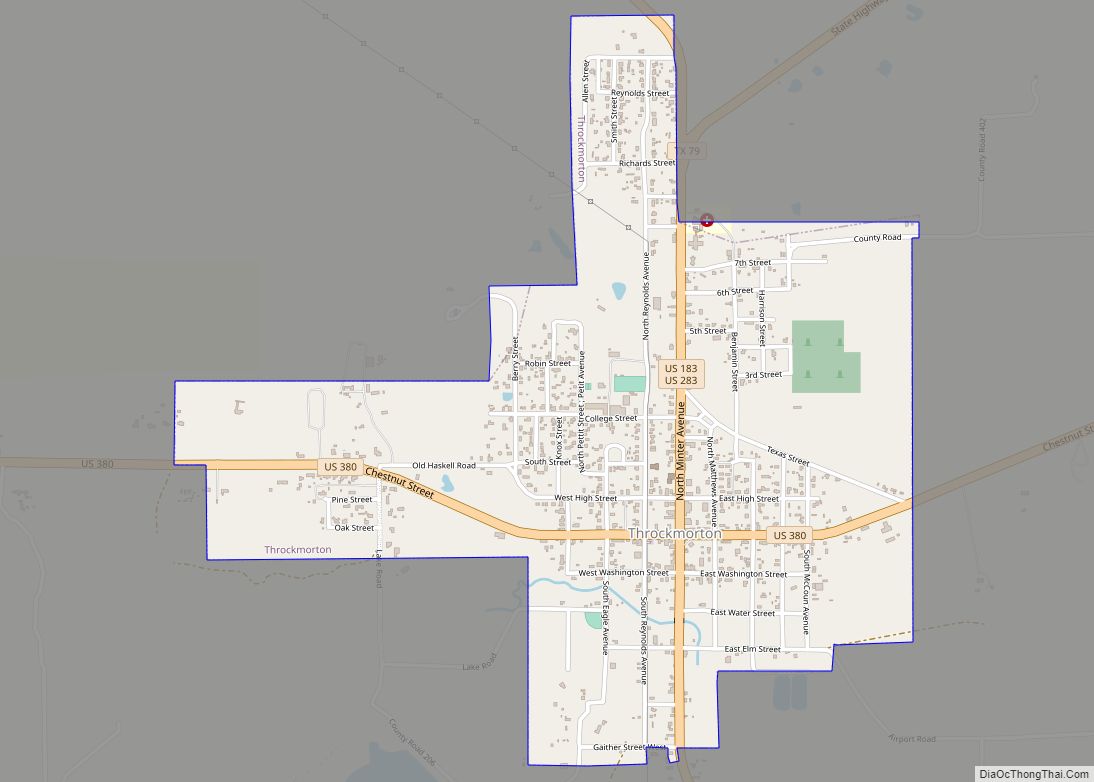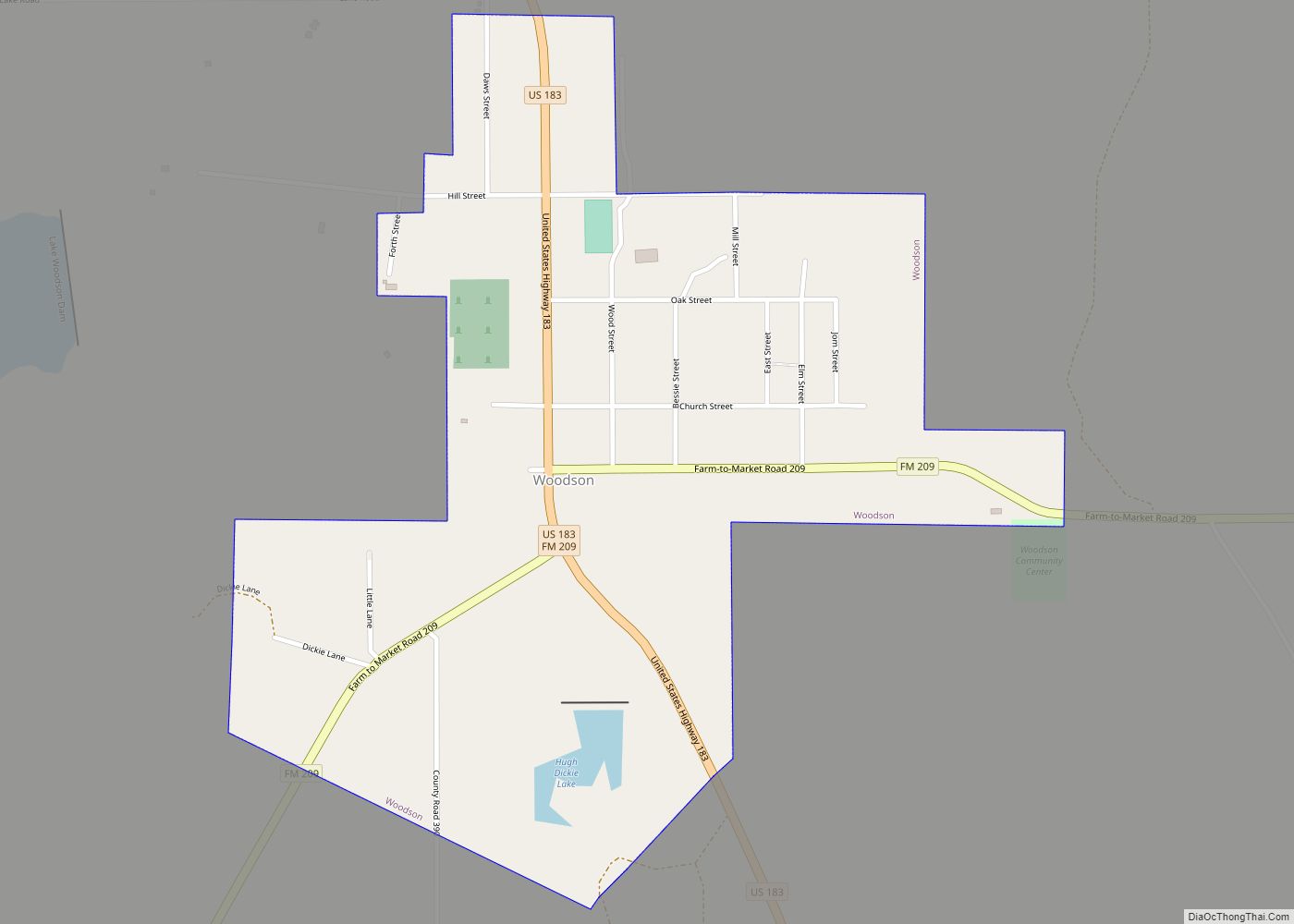Throckmorton County is a county located in the U.S. state of Texas. As of the 2020 census, its population was 1,440. Its county seat is Throckmorton. The county was created in 1858 and later organized in 1879. It is named for William Throckmorton, an early Collin County settler. Throckmorton County is one of five remaining prohibition, or entirely dry, counties in Texas.
| Name: | Throckmorton County |
|---|---|
| FIPS code: | 48-447 |
| State: | Texas |
| Founded: | 1879 |
| Named for: | William Throckmorton |
| Seat: | Throckmorton |
| Largest town: | Throckmorton |
| Total Area: | 915 sq mi (2,370 km²) |
| Land Area: | 913 sq mi (2,360 km²) |
| Total Population: | 1,440 |
| Population Density: | 1.6/sq mi (0.61/km²) |
| Time zone: | UTC−6 (Central) |
| Summer Time Zone (DST): | UTC−5 (CDT) |
| Website: | www.co.throckmorton.tx.us |
Throckmorton County location map. Where is Throckmorton County?
History
Spanish explorer Pedro Vial is considered to be the earliest European to travel through what is now known as Throckmorton County. Vial passed between the Clear Fork and Main Fork of the Brazos River in 1786 while searching for a direct route between San Antonio and Santa Fe. No other major activity is recorded in the county until 1849, when Captain Randolph B. Marcy, commander of a U.S. military escort expedition led by Lieutenant J. E. Johnson, passed through the county.
In 1837, the Republic of Texas established Fannin County, which included the area now known as Throckmorton County. In 1858, Throckmorton County was officially established. Williamsburg was designated as county seat. The county was named in honor of Dr. William E. Throckmorton, an early North Texas pioneer and the father of James W. Throckmorton, who later became governor of Texas. Organization of the county was delayed until 1879, when Throckmorton was named the county seat.
In 1854, Captain Marcy returned to the county in search of suitable locations for a reservation for Texas Indians. He surveyed and established the tract of land that became known as the Comanche Indian Reservation, which is adjacent to the Clear Fork of the Brazos River in the county. The reservation consisted of about 18,576 acres (7,517 ha) of land extending well out from both sides of the river. The location was ideal because it provided plenty of running water and hunting opportunities. Marcy also met with Sanaco and the Tecumseh leaders of the southern band of Comanche Indians in an attempt to persuade them to move to the reservation, which they began doing in 1855. In January 1856, Colonel Albert Sidney Johnston established Camp Cooper (named after Samuel Cooper) on the banks of the Clear Fork to protect the reservation. Captain Robert E. Lee served as commander of the camp from April 9, 1856, to July 22, 1857. In 1859, persons living on the Comanche Indian Reservation were uprooted and moved to the Oklahoma Indian Territory. In 1861, a few months before the start of the Civil War, Camp Cooper was abandoned by federal troops in the face of building political tension between north and south.
From 1847 until the start of the Civil War, several settlers moved into the county, living mostly in the vicinity of Camp Cooper. When the camp was abandoned, most of the settlers moved east into a line of forts that offered protection from the northern Comanche Indians.
In 1858, the Butterfield Overland Mail stage line began operating with two relay stations in Throckmorton County. One was called Franz’s Station, and the other was Clear Fork of the Brazos station on the east bank of the Clear Fork of the Brazos River, a short distance above its confluence with Lambshead Creek, in southwestern Throckmorton County.
Following the Civil War, Fort Griffin was established in 1867 along the Clear Fork of the Brazos River directly south of the Throckmorton – Shackleford County line. With federal troops in the area, most of the old settlers returned to the county and many new ones arrived. The first settlements were in areas along the Clear Fork, where the natural environment was best and wildlife was abundant. Vast herds of buffalo roamed in the areas, with buffalo hunters being headquartered at Fort Griffin. The first settlers were cattlemen who used the open range at will and moved cattle northward along the Great Western Cattle Trail. Later, farmers moved into the survey area and homesteaded on small tracts of land.
Federal troops abandoned Fort Griffin in 1881. This signaled the end of the region’s frontier era.
Glenn Reynolds was the first sheriff of Throckmorton County, Texas. Later, he moved to Arizona and was elected sheriff of Globe, Gila County, Arizona. On November 2, 1889, while transporting Apache Indian prisoners to Yuma State Prison, he and Deputy Sheriff Williams Holmes, were overpowered outside of Kelvin, Arizona and killed by them. One of these prisoners was the infamous Apache Kid.
Throckmorton County Road Map
Geography
According to the U.S. Census Bureau, the county has a total area of 915 sq mi (2,370 km), of which 913 sq mi (2,360 km) are land and 2.9 sq mi (7.5 km) (0.3%) are covered by water.
Major highways
- U.S. Highway 183
- U.S. Highway 283
- U.S. Highway 380
- State Highway 79
- State Highway 222
Adjacent counties
- Baylor County (north)
- Young County (east)
- Stephens County (southeast)
- Shackelford County (south)
- Haskell County (west)
- Archer County (northeast)
- Knox County (northwest)
